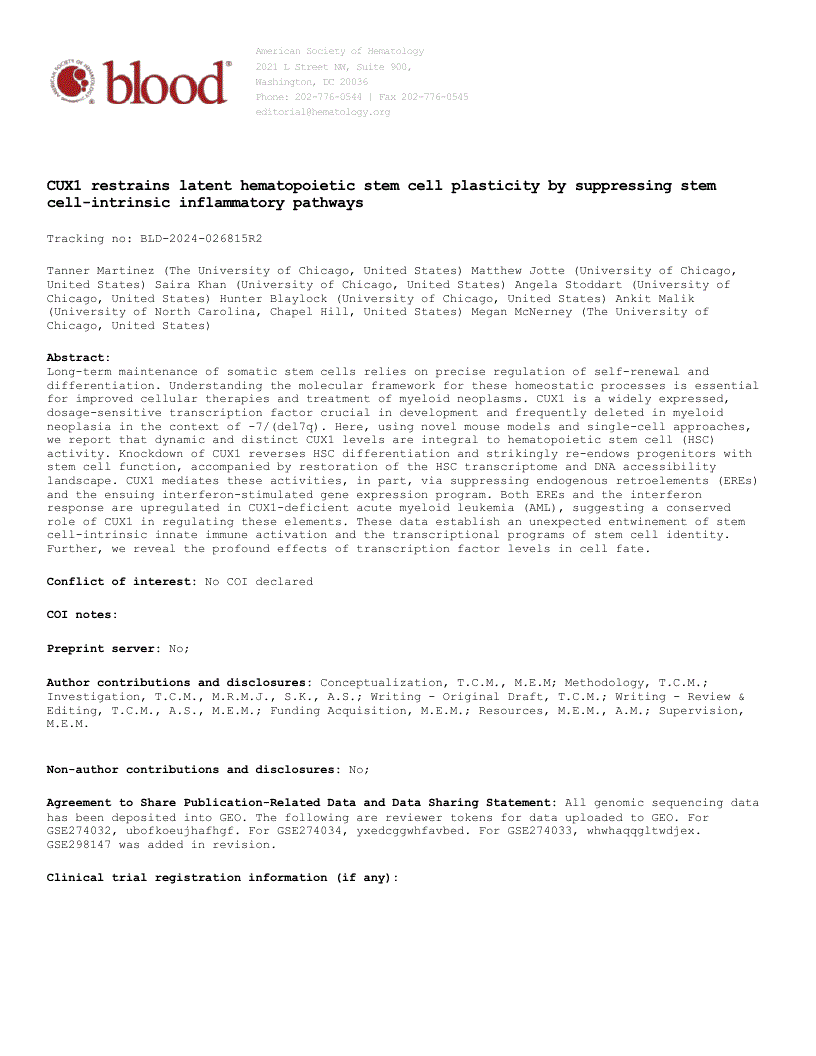Key Points
CUX1 knockdown restores and extends hematopoietic stem cell activity in early hematopoietic progenitors
CUX1 loss ignites an antiviral response due to the re-expression of retroelements, leading to increased self-renewal
Long-term maintenance of somatic stem cells relies on precise regulation of self-renewal and differentiation. Understanding the molecular framework for these homeostatic processes is essential for improved cellular therapies and treatment of myeloid neoplasms. CUX1 is a widely expressed, dosage-sensitive transcription factor crucial in development and frequently deleted in myeloid neoplasia in the context of -7/(del7q). Here, using novel mouse models and single-cell approaches, we report that dynamic and distinct CUX1 levels are integral to hematopoietic stem cell (HSC) activity. Knockdown of CUX1 reverses HSC differentiation and strikingly re-endows progenitors with stem cell function, accompanied by restoration of the HSC transcriptome and DNA accessibility landscape. CUX1 mediates these activities, in part, via suppressing endogenous retroelements (EREs) and the ensuing interferon-stimulated gene expression program. Both EREs and the interferon response are upregulated in CUX1-deficient acute myeloid leukemia (AML), suggesting a conserved role of CUX1 in regulating these elements. These data establish an unexpected entwinement of stem cell-intrinsic innate immune activation and the transcriptional programs of stem cell identity. Further, we reveal the profound effects of transcription factor levels in cell fate.


This feature is available to Subscribers Only
Sign In or Create an Account Close Modal